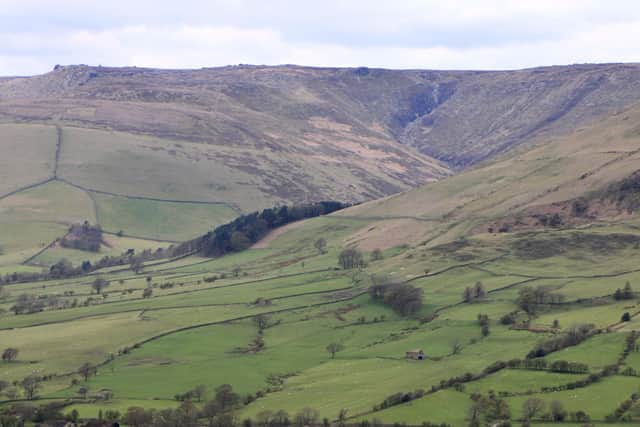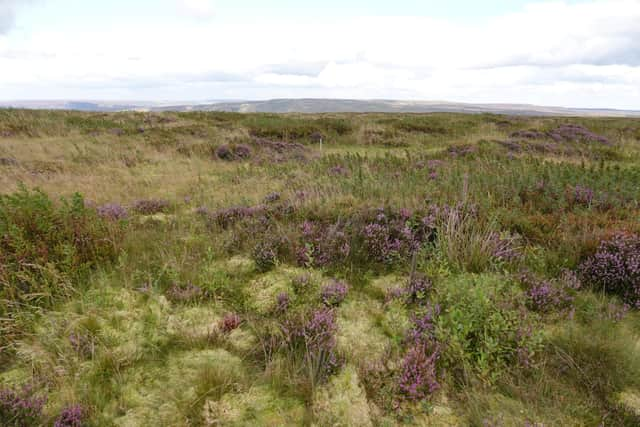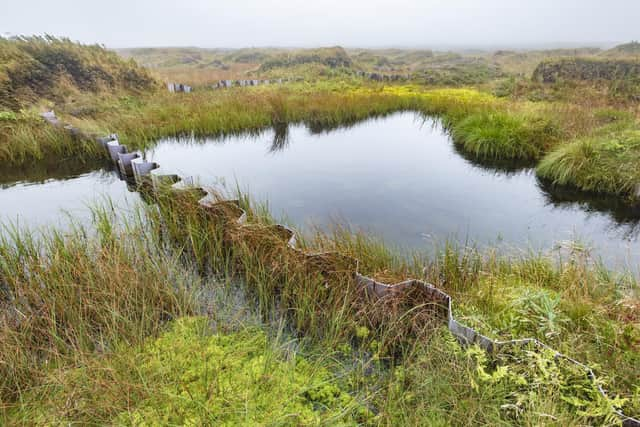Derbyshire's Kinder Scout nature reserve is now the size of 1,000 rugby pitches to enable ongoing research into tackling climate change
and live on Freeview channel 276
The site at Kinder Scout is now equal in size to 1,000 international rugby pitches as it covers 1,082 hectares.
An ‘outdoor laboratory’, created in 2010 to help improve understanding of the value of peat in natural flood management, is included in the extended area of the National Nature Reserve.
Advertisement
Hide AdAdvertisement
Hide AdThree organisations, the National Trust, The University of Manchester, and Moors for the Future Partnership, have been studying the effects of this restoration work and the benefits that can help tackle climate change, creating a healthier habitat which attracts different wildlife associated with peatlands to help increase levels of biodiversity.


Craig Best, general manager for the Peak District at the National Trust says: “When we started caring for Kinder in 1982 the mountain was a barren moonscape of bare peat, degraded by human activity over the centuries due to pollution, historical land management practices, high visitor numbers and climate change.
“However, following almost 40 years of restoration work with our partners and volunteers, the National Nature Reserve is being transformed into a plateau of healthy peat bogs rich in vegetation such as cottongrass, and sphagnum moss while creating a strong habitat for wildlife such as mountain hare, upland birds like the golden plover, and the vital invertebrates that make up the basis of the food system. This work will continue alongside the activity on the extended area.”
Techniques trialled to help restore the peat bogs included covering bare peat with rich moorland vegetation and blocking gullies to help keep the moors wetter, which have helped
Advertisement
Hide Adincrease the amount of carbon that can be stored as well as helping improve water quality as it filters into streams and reservoirs.


Advertisement
Hide AdMonitoring data collected over the past decade, using the ‘outdoor laboratory’ in the new area of the National Nature Reserve, shows this work has reduced erosion of peat by 98 per cent within 18 months of revegetation. It also revealed how different combinations of restoration work has made a significant impact in slowing water flow from the moors to the valleys, to help mitigate flooding.
Professor Tim Allott from the University of Manchester said: “The control area has been central to our scientific understanding of restoration on the site – as without it we would not have been able to properly assess the impact of the restoration work in slowing the flow of water on hillsides and reducing flood risk downstream. It also provides a ‘museum’ of the past damage on Kinder Scout. By simply standing within this small remaining ‘island’ of bare peatland, you get a dramatic sense of the scale of transformation of this iconic landscape by looking across the newly restored, vibrant, and diverse habitat which surrounds it.”
As well as the input from partner organisations, the work has also been achieved with the help of many volunteers.
Advertisement
Hide AdCraig said: “Our ranger team has worked hard with partners and volunteers, to restore this important place, creating benefits for wildlife and local communities. Volunteers have been


especially key because they enable us to deliver so much more. The amount of work we achieve across the Peak District is boosted seven-fold by volunteers who not only help with
Advertisement
Hide Adrestoration of peat but by helping us to monitor and protect this special landscape. Without them we would be lagging behind on our climate and nature ambitions.
“With the NNR now extended, as the vegetation develops, this area of the NNR will continue to give us information about the state of this special landscape and what effect it, and others like it, will have on helping to mitigate the impact of climate change – and through continued monitoring has the potential to benefit even more people.
Advertisement
Hide Ad“Kinder is a magical place which holds the key to so many benefits for our environment and is here for everyone to enjoy. We have achieved a lot in our time looking after it, but there is a lot more to do.”